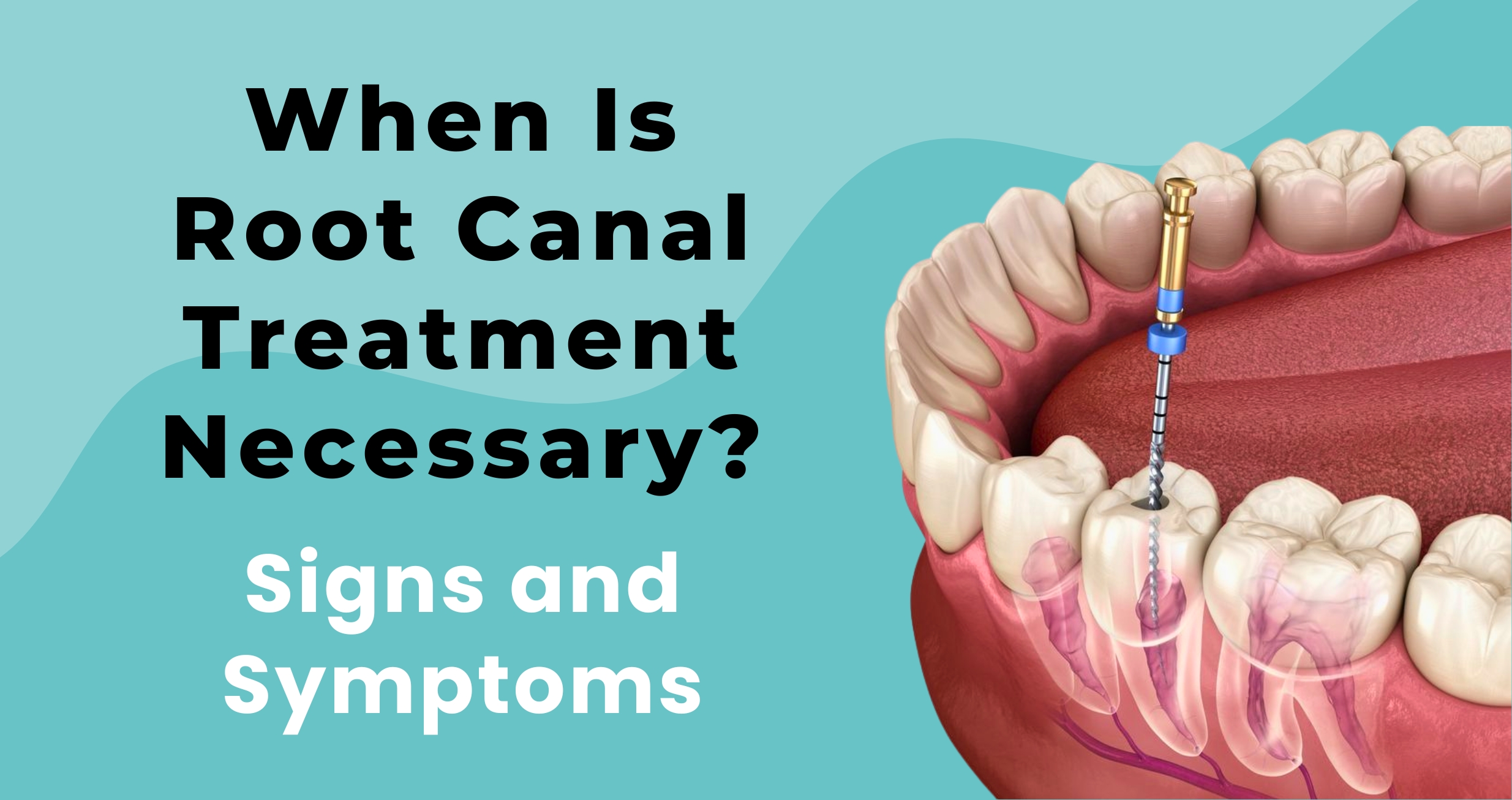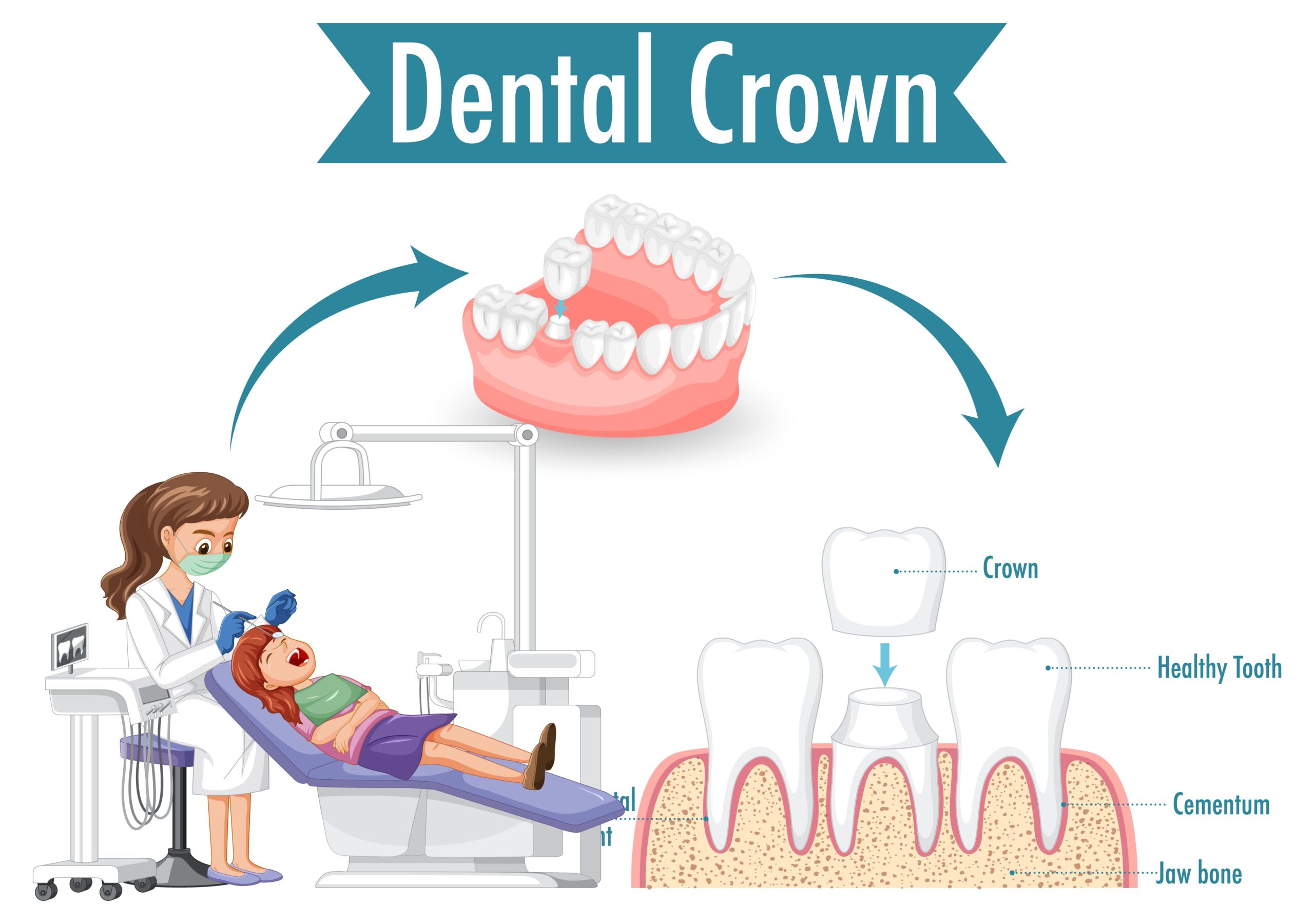
Root canal treatment – just the mention of these words can often stir up a mix of emotions, from apprehension to outright fear. But understanding when you might need a root canal and recognizing the signs can help ease some of that anxiety.
While severe toothaches or obvious cavities might signal the need for this procedure, sometimes the signs aren’t so clear to the untrained eye. It’s often the experienced touch of a dentist that can spot the underlying issues before they worsen.
Many symptoms may not surface until the problem has progressed significantly, potentially leading to more extensive and costly treatments. But before learning more about when you will need a root canal, let’s first understand what is root canal treatment.
Understanding Root Canal Treatment
A root canal procedure involves extracting inflamed or infected pulp from inside the tooth, thoroughly cleaning and disinfecting it, and, after that, filling and sealing it. The aim is to remove bacteria from the infected root canal, prevent further infection, and preserve the natural tooth.
Why Should You Get a Root Canal Treatment?
The RCT procedure, often perceived as daunting, holds numerous benefits that extend beyond mere clinical necessity. Let’s explore these benefits:
- Preservation of Natural Smile: RCT helps maintain your natural teeth and preserve your smile.
- Ability to Eat Normally: You can continue enjoying your favourite foods without being worried about discomfort or limitations.
- Reduced Need for Additional Dental Work: RCT minimizes the necessity for further dental procedures.
- Long-Term Solution: With proper care, teeth treated with root canals can last a lifetime.
- Minimal Discomfort: The procedure is almost painless because of the use of local anaesthesia, with less discomfort during recovery compared to tooth extraction.
- Efficiency and Cost-Effectiveness: RCT procedure is often quicker and more cost-effective than tooth extraction, with many dental insurance plans covering the procedure.
- Visual Appeal: Crowns used in root canal treatment not only function like natural teeth but also enhance the appearance of your smile.
Signs and Symptoms Requiring Root Canal Treatment
Understanding the signs and symptoms that might necessitate root canal treatment is vital for maintaining oral health and preventing further dental complications. These indicators serve as crucial cues, alerting individuals to potential issues within the tooth that require professional intervention.
By recognizing and addressing these signs promptly, individuals can alleviate discomfort, preserve natural teeth, and avoid more invasive dental procedures.
- Persistent Tooth Pain: Constant or intermittent tooth pain, which may worsen with pressure or chewing, can indicate an infection or inflammation within the tooth’s pulp chamber. This discomfort often persists despite over-the-counter pain relievers and may disrupt daily activities.
- Sensitivity to Hot or Cold: Heightened sensitivity to hot or cold foods and beverages, with discomfort lingering after the stimulus is removed, suggests damage to the tooth’s nerve or pulp. This sensitivity ranges from mild discomfort to sharp, shooting pains.
- Swelling and Tenderness: Swelling in the gums or facial tissues around the affected tooth, accompanied by tenderness or a feeling of pressure, may indicate an abscess or infection. The swelling may be localized or more widespread, depending on the severity of the condition.
- Discoloration of the Tooth: Changes in the color of the affected tooth, such as darkening or greying, may result from internal damage or decay. Discoloration often occurs gradually and may be accompanied by other symptoms, such as pain or sensitivity.
- Abscess Formation: The formation of a dental abscess, characterized by a painful, pus-filled swelling near the affected tooth, indicates a severe infection that requires immediate attention. Abscesses can cause intense pain, swelling, and even systemic symptoms such as fever or malaise if left untreated.
Diagnostic Procedures
Before commencing treatment, your dentist or endodontist will conduct various assessments to ascertain the condition of your teeth and decide if root canal treatment is necessary.
These evaluations may include the following:
- Dental X-rays: X-rays are done to visualize the affected tooth and identify any underlying issues.
- Tests: Additionally, they may perform tests to assess the vitality and sensitivity of the tooth pulp. This could involve tapping the tooth gently or applying hot or cold stimuli to gauge your response.
- An electric pulp test (EPT): EPT may also be administered to evaluate the nerve’s responsiveness.
Furthermore, your dentist will check for signs of inflammation or swelling in the surrounding gums and bone. They may inquire about any discomfort experienced when biting down on the tooth.
Prevention and Early Intervention
Beyond the basics of brushing and flossing, there are additional habits crucial for oral health and avoiding root canal treatment. These proactive practices help prevent common dental issues from escalating, minimizing the need for invasive procedures. Incorporating these habits alongside regular dental care can significantly reduce the risk of experiencing serious oral health problems.
- Regular Dental Check-ups: Bi-annual visits to the dentist are essential for thorough cleaning and early detection of potential issues, thus preventing the need for root canal treatment.
- Prompt Treatment for Cavities: Addressing cavities promptly prevents damage and the spread of bacteria, ultimately averting the need for root canal therapy.
- Use of Mouth Guards: Mouth guards and teeth grinders are recommended for sports enthusiasts to prevent tooth fractures and subsequent infections that may lead to root canal treatment.
- Avoidance of Hard Foods: Refraining from consuming hard foods helps prevent tooth damage and potential bacterial infiltration into the tooth’s root, reducing the risk of needing a root canal.
- Avoiding Non-Food Item Chewing: Avoiding the habit of using teeth for non-food items prevents fractures or breaks in teeth, minimizing the risk of bacterial penetration and the need for root canal therapy.
- Limiting Acidic and Sugary Foods: Minimizing the consumption of acidic and sugary foods helps preserve enamel and prevents cavity formation, thus reducing the likelihood of requiring a root canal procedure.
- Addressing Oral Pain: Promptly addressing any oral pain or discomfort by seeking dental attention prevents the progression of dental issues to a stage where root canal treatment becomes necessary.
Conclusion
Root canal treatment procedures may evoke feelings of apprehension, but understanding its necessity and recognizing the signs can alleviate anxiety and promote proactive dental care. By addressing issues early through regular dental check-ups and prompt treatment, individuals can avoid the need for root canal therapy and maintain optimal oral health.
Incorporating preventive measures such as wearing mouth guards, avoiding hard foods, and limiting acidic and sugary foods further reduces the risk of dental complications. Ultimately, prioritizing oral hygiene and seeking timely intervention for any discomfort or abnormalities can help preserve natural teeth and minimize the likelihood of requiring root canal treatment in the future. For comprehensive dental care and expert guidance, schedule your appointment at Gnathos Dental Care today!
Visit Gnathos Dental Care for personalized dental services and proactive oral health care.



